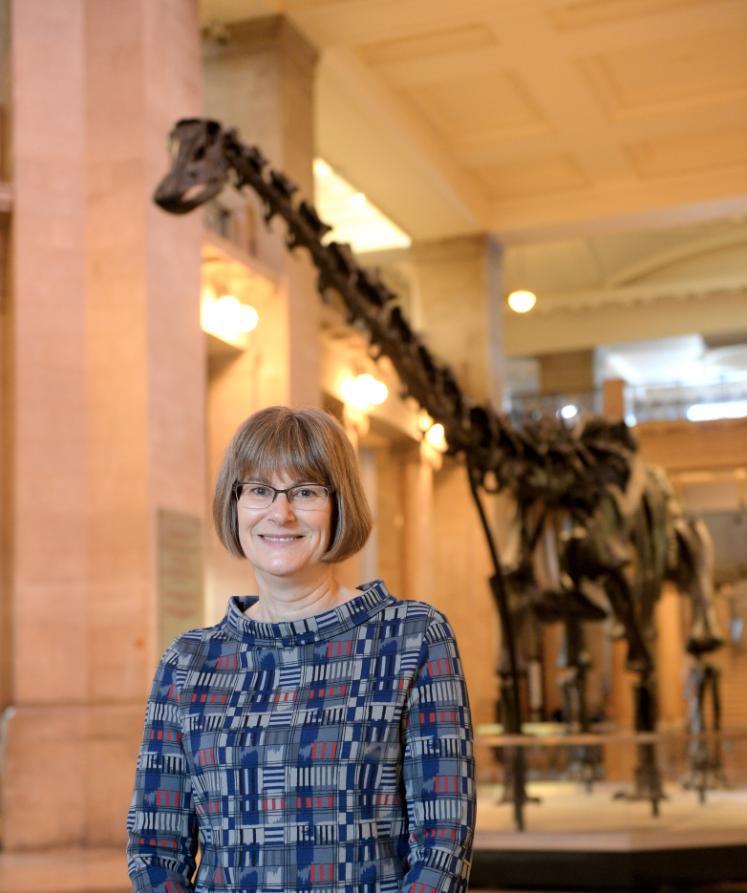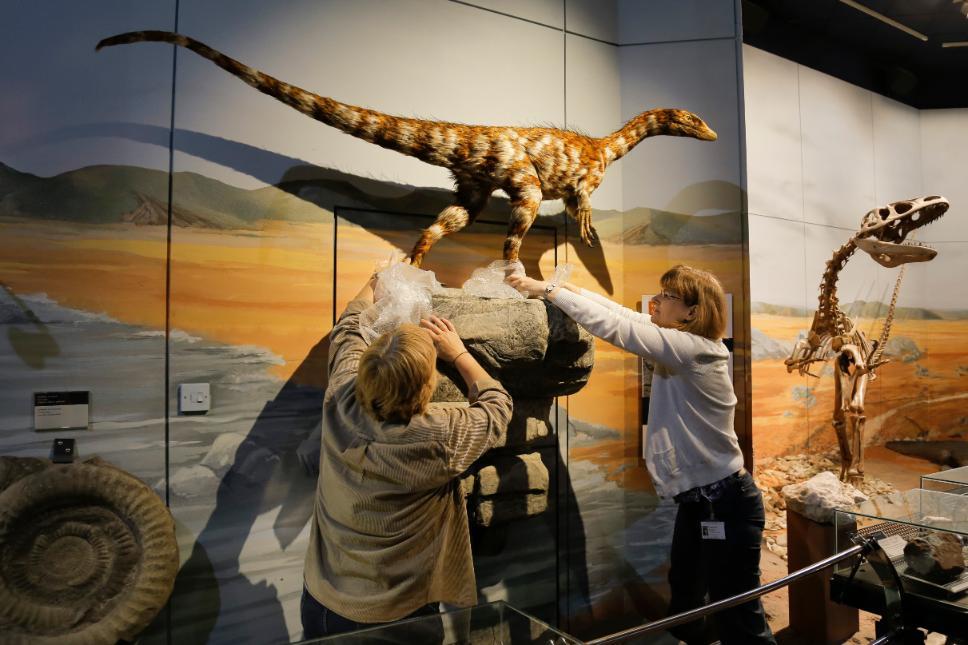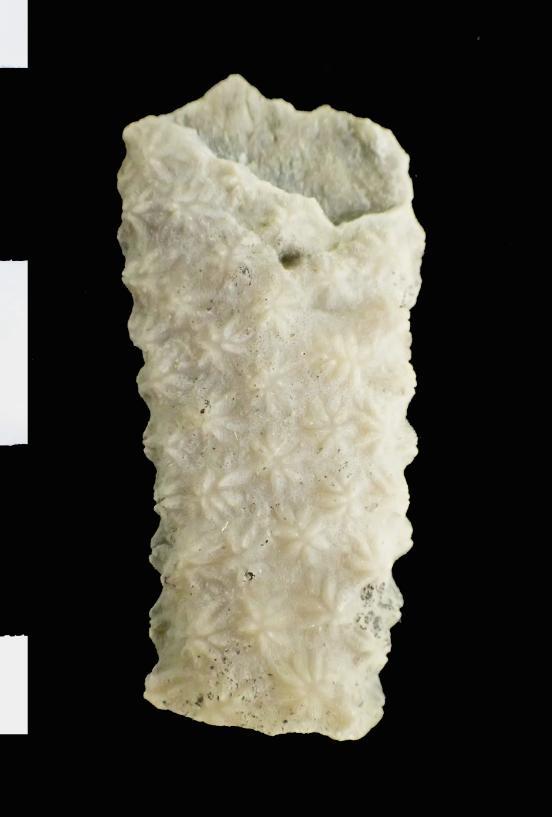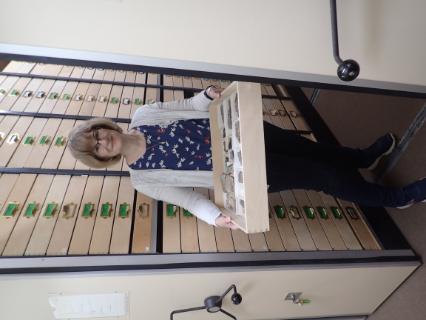Caroline Butler
Dr Caroline Buttler - Ask a Palaeontologist

This month we chat to Dr Caroline Buttler, Head of Palaeontology at Amgueddfa Cymru – National Museum Wales
- Name: Dr Caroline Buttler
- Job: Head of Palaeontology
- Location: Amgueddfa Cymru – National Museum Wales
What inspired you to become a scientist?
I had no plans to go to university when I was in my final years at school. I wanted to be a radiographer and had a place in a London hospital to train. However, at 16 I started to study geology and after my exam results, I realised that I didn’t want to give it up. So two months before the university year started my headmaster rang around and found me a place at Liverpool University on a Geology course. 
What inspired you to become a palaeontologist?
I always enjoyed biology at school and the palaeontology modules of my geology degree were my favourites. I particularly liked the way looking at individual fossils can lead to reconstructing ancient ecosystems.
Describe your work/job.
I am Head of Palaeontology at Amgueddfa Cymru - National Museum Wales in the Department of Natural Sciences. I am responsible for the management and development of the Palaeontology Section including collections, research and public engagement. I am currently also acting joint Head of Natural Sciences.
My research is focused on Palaeozoic bryozoans, which are tiny colonial marine animals. I am particularly interested in their ecology, systematics and taxonomy. I collaborate with other palaeonotologists throughout the world. One long-term project is a revision for part of the Treatise on Invertebrate Paleontology. 
What’s the best part of your job?
The best part of my job is working with the amazing fossil collection here in museum. We have nearly half a million specimens, many of them rare and including thousands of type fossils which describe new species. I also enjoy the variety of my work: no two days are the same.
What other jobs have you done?
My first job was on Saturdays in Woolworths when it had a fruit and veg counter. While at university I did a variety of jobs in the holidays – Christmas post, Mr Kipling’s cake factory, cook in a wine bar and giving out free samples of instant mashed potato!
I was a geological conservator at Amgueddfa Cymru - National Museum Wales, responsible for the care of the fossil, mineral and rock collections. I worked on everything: meteorites, ichthyosaurs, all kinds of invertebrates and fossil plants. One memorable task was to help another museum with two dinosaur leg bones which had broken after one landed on the other. Repairing them was like doing two simultaneous 3D jigsaw puzzles, with no picture, the pieces mixed up and some missing!
What were your favourite subjects at school?
Biology was always a favourite all the way through school and in the sixth form I began studying geology which I loved. I also really liked history but my older brother was very good at it so I had to study something different!
Where did you study geoscience/palaeontology?
After my first degree in geology at Liverpool, I got a scholarship to study abroad for a year and went to the University of Manitoba in Winnipeg, Canada to do an MSc in palaeontology and ecology. For the second year of my Masters I was paid as a research assistant and learnt how to make thin sections of fossils. This was useful for my PhD on Ordovician bryozoans from Wales and the Welsh Borderlands which I did at Swansea University jointly with the Natural History Museum, London. After my PhD I spent a year at Trinity College, Dublin on a Royal Society European Post-doctoral Fellowship continuing to research bryozoans.
What hobbies do you have outside of palaeontology?
Walking, especially along beaches and coastal paths where I can look at the marine wildlife. I also enjoy reading and I knit to relax while watching tv. I have been known to include patterns based on fossils on hats!
What is your favourite fossil?
I have spent my career studying bryozoans, so it has to be one of those. Bryozoans are not well-known fossils and being small often get overlooked, however when you look at them down the microscope they are amazingly complex structures. I change my mind as to my favourite, but this time I’m going for Constellaria from the Lower Palaeozoic. The colonies have beautiful star-shaped patterns on the surface of the colony.
What’s your favourite place that you have travelled to study palaeontology?
As part of my Masters degree, I had the opportunity to collect Ordovician solitary corals in the Rocky Mountains. We climbed up to 8000 feet and camped in a stunningly beautiful area, then collected specimens from the crest of a knife-edged ridge. Scarily spectacular!
Why is it important for us to study palaeontology?
By studying fossils and the surrounding rocks we can build up a picture of past worlds and an understanding of how life has changed over time. We can use past events such as mass extinctions to engage the public with the current biodiversity crisis and encourage action.
What advice would you give to somebody interested in becoming a palaeontologist?
Study science at school, including biology if possible. Read as much as you can about palaeontology - there are many accessible books and websites available - and of course try to get outside and look for fossils whenever you have the chance.
It is important to remember that there are a variety of jobs that palaeontologists can do as well as research: curator in a museum looking after collections, interpreter showing fossils to the public or schools, palaeoartist, and work in industry or for environmental companies. A PhD is required to undertake research at a university, but not all the other options need one.
Caroline online
-
Follow @CardiffCurator on Twitter - the Department of Natural Sciences at Amgueddfa Cymru - National Museum Wales



